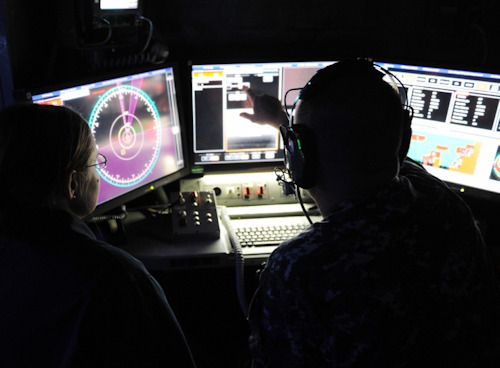Owning cutting-edge technology has been a determining factor in deciding the fate of conflicts in the past, and will be even more so in the future. On August 11, the US Navy's Technical Director of Surface Laser Weapons Development Christopher Behre announced that he had been tasked with drafting new technical guidelines for future laser-based defense programs.
In his speech at Booz Allen Hamilton's webinar, Behre revealed the new assignment assigned to him by the Pentagon's Office for Directed Energy Weapons: "These guidelines will allow the identification of components and subsystems around which to start a standardization process".
The goal of the US Department of Defense (DoD) is to set up a system architecture common to all direct energy weapons (laser and microwave), which can be a reference both for manufacturing companies and for future requirements of defense services. Americans. The adoption of such an architecture requires the use of an open modular approach (Modular Open Systems Approach 'MOSA') able to guarantee:
• Greater coordination between defense services in the purchase of platforms with shared components (even if coming from different companies)
• Reduction of costs on the large-scale purchase of components shared between the various programs
• Improved system update capacity, through interfaces that allow the easy replacement of old components for new ones (plug-and-play)
• Greater competition opportunities for small niche component manufacturers who meet the standards set.
 In the DoD's desire to implement a MOSA architecture, it is also necessary to consider the maturity of direct energy technologies and their diffusion. In fact, although there are huge amounts of data relating to the development of laser weapons and numerous prototypes tested, no program has entered large-scale production; this implies the absence of pre-existing platforms and equipment and therefore a simplified implementation of an open modular architecture.
In the DoD's desire to implement a MOSA architecture, it is also necessary to consider the maturity of direct energy technologies and their diffusion. In fact, although there are huge amounts of data relating to the development of laser weapons and numerous prototypes tested, no program has entered large-scale production; this implies the absence of pre-existing platforms and equipment and therefore a simplified implementation of an open modular architecture.
According to Behre, the document will be ready within 1 year at the latest; at the beginning of 2021, a first version of the guidelines will be distributed to the industries involved in the programs under development and to the purchasing offices of the various branches of defense. In this way we want to ensure an active involvement of the private industry: counting both on their feedback and on the understanding of the potential added value of a general adoption of the new standards. Despite the benefits that this reference architecture can bring, industry and defense experts discuss the effects that standards / guidelines can have on innovation and how they risk slowing it down. C. Behre in the webinar also refers to this, replying: “In the document there will be no strict standards with a capital S (…). We are trying to set limits, in order to guide development - not impractical requirements that would stifle innovation ".
Since the 80s we have been accustomed to hearing about the great advances in the fields of laser technology and their possible military applications (the Strategic Defense Initiative by Regan in 1983, nicknamed "Star Wars"). At 2020 it is legitimate not to be optimistic about direct energy weapon systems, since none of these have really entered active service, and we have never gone beyond tests and prototypes. It is also true that four decades of research have led to tangible and critical developments for the future use of weapons of this kind. Experiments and tests are absolutely promising, you just have to be patient.
Photo: US Navy












